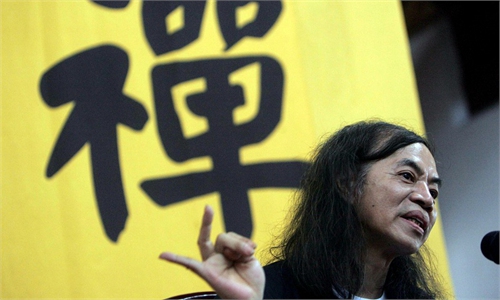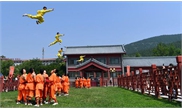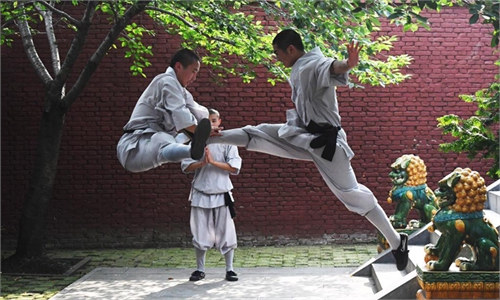ARTS / CULTURE & LEISURE
Documentary director delves into Zen Buddhism, martial arts at Shaolin Temple
Taking action
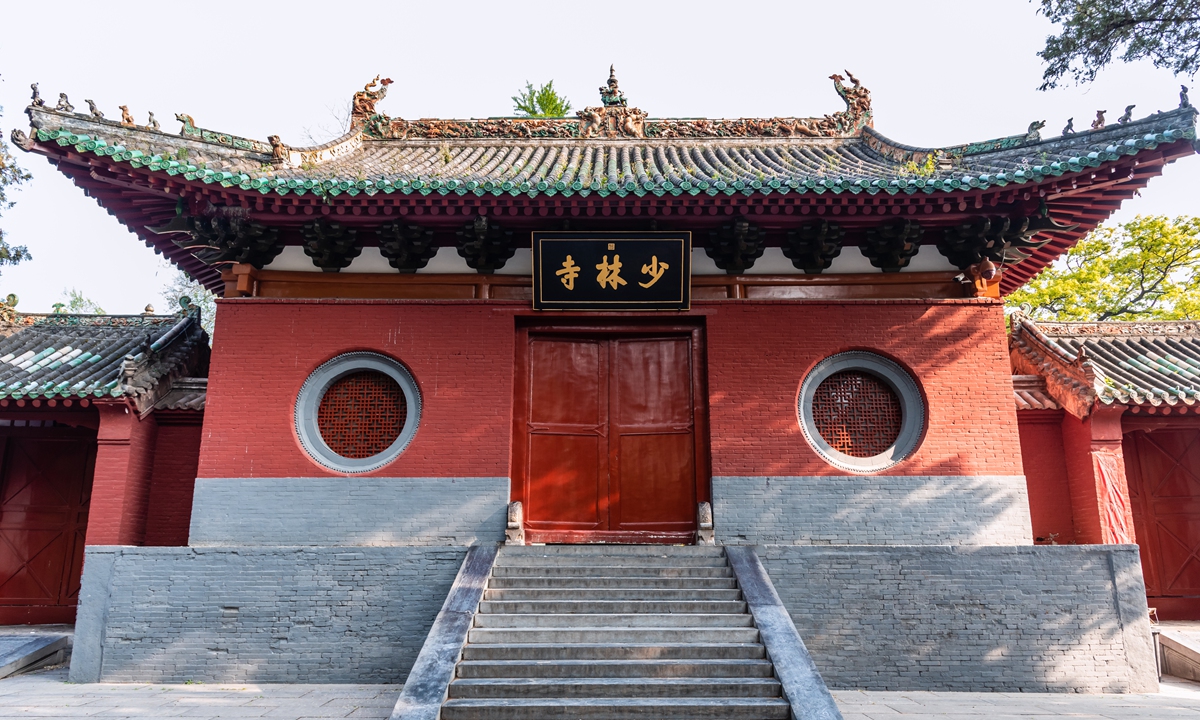
The Shaolin Temple in Dengfeng, Central China's Henan Province Photo: VCG
For decades, the Shaolin Temple in Central China's Henan Province has been attracting tourists from around the world who long to discover the secrets of its peerless martial arts and explore more about the birthplace of Zen, a school of Mahayana Buddhism that originated in China, where it is called Chan in Chinese.This World Heritage Site has also captured the attention of Sun Hongyun, an associate professor at the Beijing Film Academy and documentary director, who traveled high upon into the Songshan Mountain around three years ago with her film crew to uncover the real face of Shaolin culture.
"There are a lot trendy buzzwords among young Chinese people, such as Foxi, or 'Buddha-like mind-set,' which means letting nature take its course or working in accordance with a situation's natural tendency. But what does it really look like to have a Buddha-like mind-set? As far as I understand it, it's definitely not 'taking no action.' So I came here to see what they do," Sun told the Global Times in a recent interview.
In her documentary film Into the Shaolin, she observes the life and mental journey of several Shaolin monks and a young Serbian female anthropologist who lived at the Shaolin Temple for research.
The documentary takes a rather plain perspective: Just like ordinary people, monks at the Shaolin Temple have their everyday homework to finish, and they also have their own questions about as well as longing for the future.
"Many tourists say that this temple has become a commercial place crammed with businesses and performances, but I don't think that way. The people who live here have been here since they were very little. They live a life that many people don't see and that's what my documentary focuses on," Sun said.
The documentary has been earning a good reputation for itself. It was shortlisted in the Doc Edge Film Festival and the San Francisco International Film Festival. And in April it won the Russian Documentary Film and Television Association Award at the Moscow International Film Festival, where judges called it "a symphony of art."
Complicated yet simple
As early as 1982, the movie Shaolin Temple starring Jet Li made the Songshan Mountain famous overnight.
It also brought the image of Shaolin martial arts into the minds of audiences all over the world, equating the name Shaolin with unmatched martial arts.
Sun told the Global Times that countless people now come to the Shaolin Temple to make movies every year. She joked that if a bird lays an egg inside the temple, more than 100 cameras from all over the place will cram together just to get a shot.
"Unlike the mysterious vibe seen in the movies, when you come to the Shaolin Temple you will find it as a very open space where there are various activities, filming and seminars all day long. But it also means a mix of people," Sun said.
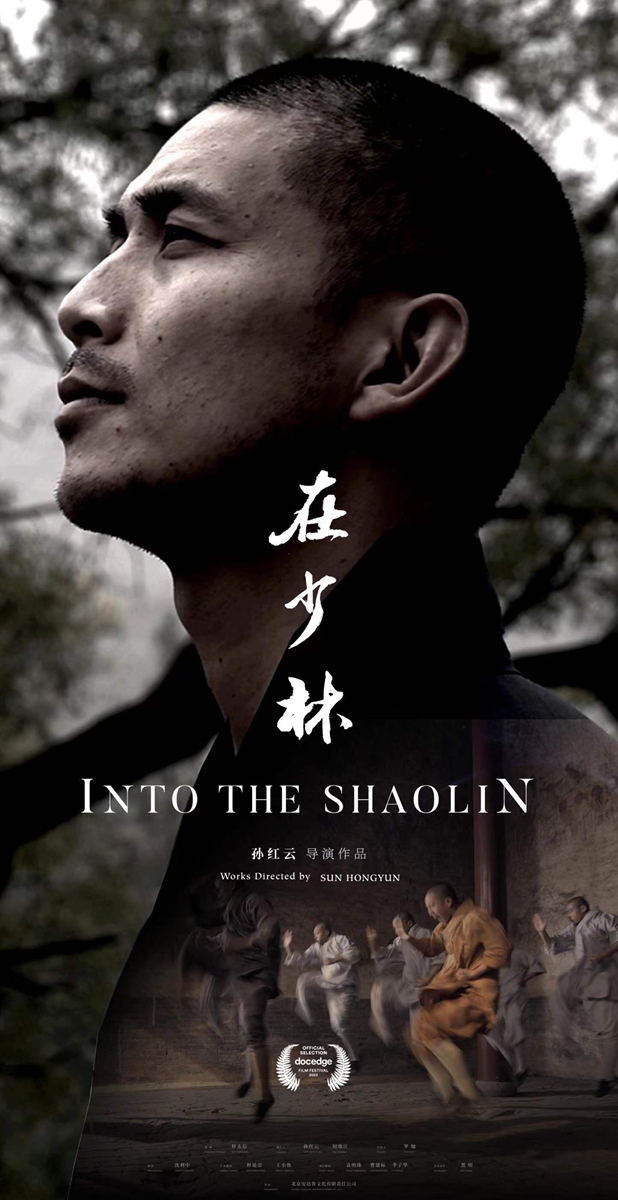
Promotional material for Into the Shaolin Photo: Courtesy of Sun Hongyun
Talking about why she wanted to make the film, Sun said that she has had her own inner struggles in life. She once went to Longquan Temple deep in the Fenghuang Mountain in Beijing to do volunteer work. During her time there, she had a chat with one of the monks - a master who graduated from Tsinghua University with a PhD before becoming a monk.What is the real attraction in the temple? Can the monks find peace of mind and end suffering here? Sun decided to go into the birthplace of Zen Buddhism, Shaolin Temple.
"People here have been educated in another system, where most of them can compose poems and understand the philosophy of life from a completely different angle."
Sun pointed to an elderly Zen master named Yan Yong as an example.
"Yan Yong didn't go to school nor has a diploma. He is the only person I have ever seen who lives as much as possible like ancient romantic poets," Sun said.
At the same time, the young monks here also have their own concerns about the future and life. Foreigners are another main group shown in the documentary.
"I wanted to show the multi-faceted and rich nature of the Shaolin Temple. There are quite a lot of foreigners with stories as well."
Sun noted that there was one foreign student who suffered from depression and had attempted suicide before coming to Shaolin Temple to study Zen and kung fu in an attempt to find himself.
As for Serbian anthropologist Marta, Sun helped her find some opportunities to meet and communicate with the local monks so that she could better carry out research. As an outsider, Marta's experience at Shaolin also brings the audience into the story with her.
An artistic touch
Although there are some young people from wealthy families at the temple, the fact is that there are more people from poor families who come to live a different life.
Heng Kun, the attendant of the master Yan Yong, is only 18 years old. His father died when he was 5.
Sun told the Global Times that they once went to Heng's home to film. It was a very remote and poor mountain village with harsh living conditions in Nanyang, Henan Province, where he lived with his grandparents.
"Though they sent him to Shaolin at a very young age, Heng Kun's grandparents clearly didn't want him to become a real monk, so the visit finally turned into a fight," Sun recalled.
It was not easy to film a confrontation like that, but part of the job is to film reality.
Still, as a documentary director, Sun tries to bring in a certain aesthetic sense to her documentaries.
Sun co-created the China documentary Ivens on China from Dutch director Joris Ivens. Her cinematographic style was quite influenced by his artistry.
Under her lens, the Shaolin Temple is a place with four distinct seasons. It shows the monks practicing martial arts in the early morning, the harvesting of wheat in the fields, conversations between masters and disciples in the mountains, as well as the close bond between people and the wild animals in the area.
